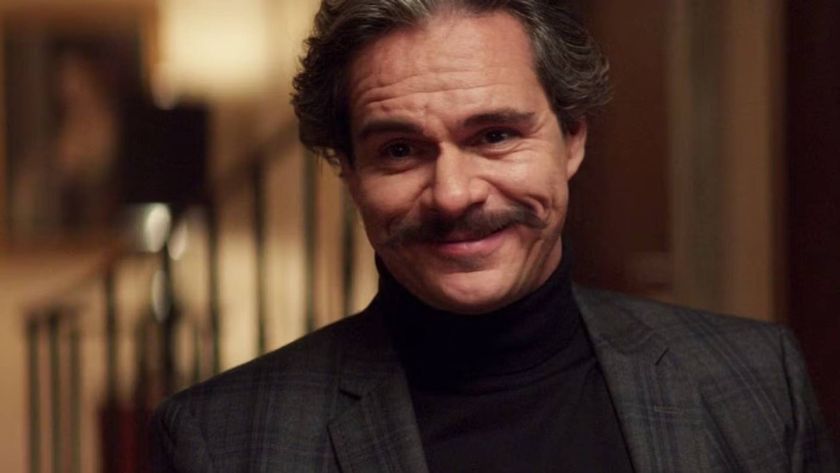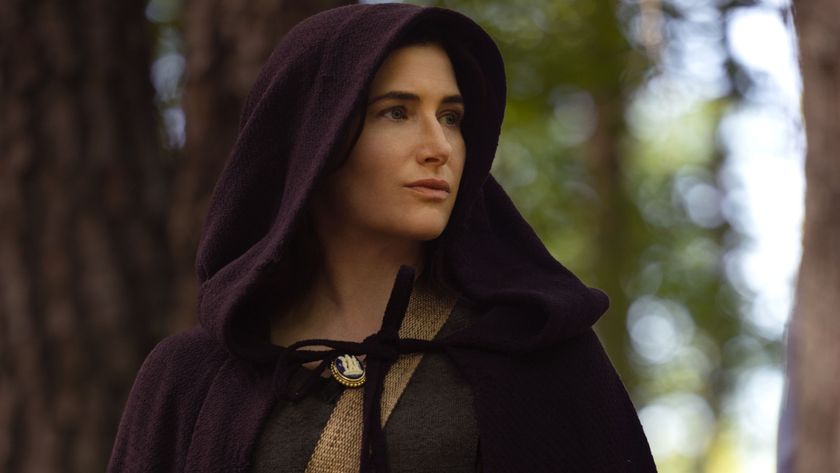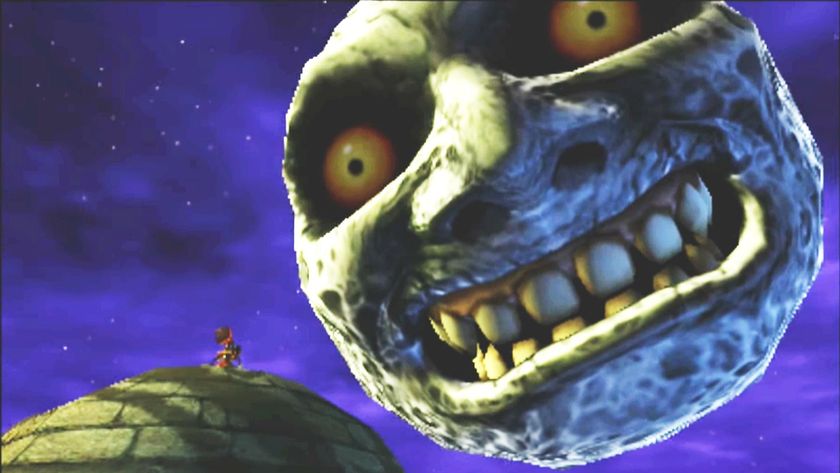Blake’s 7 went one better than Doctor Who . It didn’t just replace its lead actor; it carried on without its lead character. But is the general wisdom that the show floundered without him unfounded?
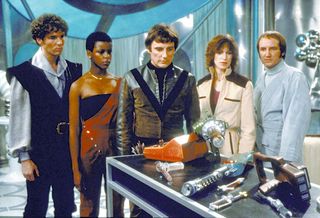
Case For The Prosecution: I would like to take the jury back to 1980. A time when Terry Wogan made a running gag out of Blake’s 7 ’s wobbly effects. A time when viewers sent then Points Of View presenter Barry Took money to go towards the Help Paul Darrow Get Some Acting Lessons fund. A time when everyone was going, “ There’s not seven of them and where’s Blake?”
Defence: Objection! The object of this trial is not to assess Blake’s 7 as a whole...
Prosecution: My point is, Blake’s 7 was always a butt of media jokes, but at least the first two seasons managed to rise above its budgetary constraints. This was mainly thanks to series creator Terry Nation, who plotted out the first two seasons, from Blake’s escape from the totalitarian Federation, through the gathering of the Seven, the acquisition of the Liberator and Orac, to the final battle at the end of season two. It was always cheap, but the evolving plot, the dynamics of the main characters and the political wranglings of the Federation, marked it out from the episodic, alien-of-the-week approach of most SF until that time. It dared to be different, even going so far as to unexpectedly kill off one of its heroes (Gan).
But from season three everything changed. The main guiding lights both in front and behind the camera had left. Blake, in the guise of Gareth Thomas, had left, and Terry Nation, although still contributing the odd script, took less interest in what was being commissioned and had little input into season four, other than signing forms enabling it to go ahead. There was less of a serial feel to the show, and more emphasis on directionless stand-alone episodes like “Ultraworld” and “Dawn Of The Gods,” which all felt like little more than cut-price Trek episodes with more bickering.
Defence: This, I may remind the Prosecution, was the last show that ever managed to hold its own against Coronation Street . The final episode pulled in ten million viewers. Not bad for a “directionless” series. The BBC has pretty much given up scheduling anything other than cheap filler shows against Corrie these days.
Prosecution: Popularity is no defence. A huge audience does not reflect artistic value. Seasons three and four were below par.
Sign up to the SFX Newsletter
Get sneak previews, exclusive competitions and details of special events each month!
Defence: How can you call episodes like “City On The Edge Of The World,” “Death Watch” and “Rumours Of Death” below par? All are extremely good examples of SF, with solid stories based on strong SF concepts, memorable imagery, good characterisation and witty dialogue. Who can forget Colin Baker as the psychopathic Baban The Butcher, for instance? Or the final scenes of a whole race entering a stargate which will transport them to a new home in “City”? And what about the harrowing death scene of Tarrant’s brother in “Death Watch,” where we see from his point of view the fatal blast which takes his life?
Prosecution: And they were all written by Chris Boucher, the series’ script editor for all four seasons. It’s true to say that Boucher was the one writer working on the last two seasons who really understood the show. But individual episodes do not an entire season save. As the scriptwriter, Boucher should’ve kept a tighter control on the other scripts. The result? To begin with, you can’t understand why these rebels – now Blake-less – would want to stick together...
Defence: For their mutual benefit, of course.
Prosecution: That is implied, but never made clear. To a casual viewer, their constant bickering undercut the shared vision of Blake’s reprobates. Why didn’t they just go their separate ways? Especially with the Federation in disarray after the war at the end of season two. It didn’t appear to be a threat any more.
Defence: Hardly. The Federation won the war and was rebuilding.
Prosecution: So we are briefly informed in the first episode of season three, “Aftermath.” But we never get to see that rebuilding. Between “Aftermath” and “Rumours Of Death,” seven episodes later, where we return to Earth and see that the Federation is in full control of Earth again, we receive little information about what they’ve been up to. If the organisation was as weak as suggested in “Aftermath,” then surely Avon and crew should’ve been doing their best to take advantage of the fact. Instead, they play space pirates, enabling the Federation to regain strength. Quite how is never made clear. Neither is the process by which Servalan becomes President and maintains power. There should’ve been actual stories showing viewers how the Federation was rebuilding itself. Instead, for much of season three, the Federation is an off-screen threat. Even worse was to come in season four where, with the exception of “Warlord,” the Federation seems only to exist to try and trap Avon and his crew.
Defence: Servalan was obsessed by this point.
And then we come to the new characters. Tarrant was Blake but without the conscience, but a top-notch pilot. Dayna, probably the most interesting of the new crew, was a weapons expert, who joined the renegades when her father was killed. Soolin, introduced in season four to replace Cally, was the best shot in the galaxy, and joined the crew when her lover died. Boy, did Avon make a habit of recruiting incredibly handy people. It was all becoming just too convenient, and too cheesy.
As for the hardware, The Scorpio, the new ship for season four, was a severe disappointment after the grandeur and originality of the Liberator. It looked like a flying door wedge, with a DIY store interior.
Defence: But The Scorpio was an emergency measure. Everybody on the production team thought season three was going to be the last, so decided to blow up the Liberator as a finale.
Prosecution: But did we have to put up with such a lame replacement?
Defence: It was quite daring to make such a bold change. To go from the gargantuan fastest ship in the galaxy to a small freighter.
Prosecution: Just a freighter? The only other ship in the galaxy with teleport facilities? And Slave, a super-computer? And, from “Star Drive” onwards, the fastest drive in the galaxy? It’s all laughably silly.
Defence: Don’t forget, season four was produced under great pressure. Blake’s 7 had a new produce, Vere Lorrimer, who had directed some of the best episodes under the show’s previous producer David Maloney. Lorrimer has been justifiably lambasted for many of the choices he made in terms of the show’s direction, but what he did bring were much more polished production values.
Sure, there were still too many wobbly stock shots of Federation pursuit ships, but, in general, season four was the best-looking of the lot. “Gold” had some impressive explosions, “Stardrive” featured well-directed action scenes, “Blake” boasted excellent model effects, and the set design was much improved (apart from the uninspired Scorpio bridge set).
Lorrimer also made the sensible, Thunderbirds -inspired decision to plough money into filming the stock effects shots of The Scorpio entering and taking off from the Xenon base. Very impressive they were too.
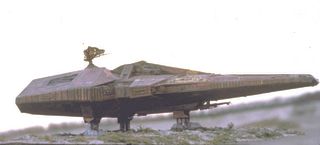
Prosecution: You cannot defend a show on production values alone.
Defence: No, but Blake’s 7 has been traditionally attacked because of its effects, so it's worth mentioning how much they improved. Even in season four there were still some dodgy sets and model work, but in general the much-vilified Lorrimer achieved minor miracles on a BBC budget and the show looked much more impressive than the Doctor Who episodes showing at the same time.
But we’re arguing about a technicality here. The last two seasons of Blake’s 7 remain a landmark in small-screen SF. A lot of the arguments the Prosecution has raised are valid. Yet I suggest he argues with the benefit of hindsight. Blake’s 7 was a product of its time, and yet still managed to innovate and pave the way for future SF shows like Babylon 5 . It may not have had the extensive backstory, but to have any kind or arc or developing plot at all in early ’80s SF was a rare blessing. And while the last two seasons weren’t as focused as the first two, they remained experimental and graoundbreaking. Take a look at the penultimate episode “Warlord,” for example, in which Avon tries to band together the non-aligned worlds to fight against the Federation.
Prosecution: An idea which should have run over a number of episodes, or indeed been a sub-plot for the whole season, rather than the “let’s try and recruit scientists” angle they opted for. How many self-exiled prominent scientists are there in the galaxy, for God’s sake?
Defence: Again, I would say you’re arguing in retrospect. For the time it was an exciting notion that our heroes could motivate worlds into a war. Even more influential were the aftereffects of the events in that episode; Avon and co having to abandon their base, and the revelation that Avon knew that Blake was still alive, but preferred to try another solution first.
In fact, Avon is another huge plus point about those last two seasons. He’d always been the most popular character in the show, a true anti-hero you loved to hate. With Blake out of the way, he was allowed to shine, centre-stage, and I bet more people think of Avon when they remember Blake’s 7 than they do Blake. Paul Darrow may not have been the world’s best actor, but he was perfect for the duplicitous Avon. Having a lead character forced into the role of hero, while always looking after numero uno, was a stroke of unintentional genius, leading to riveting scenes like the one in “Orbit” where it looks as if Avon really will throw Vila out of a shuttle airlock so that the ship can reach escape velocity.
Also effective was the relationship between Servalan and Avon. It may have been dramatically iffy at time, but the actors, Jacqueline Pearce and Paul Darrow, always made the scenes of their ambiguous sexual attraction a camp joy. It certainly seemed to be a hit with the viewers.
Prosecution: Though, strangely, it was only ever actually Tarrant who managed to get off with her, in “Sand.” A bad mistake, because until that point the viewer could believe that there might be something serious going on between the Avon and Servalan. Once Servalan has slept with Tarrant, she comes across as a bit of a slapper.
Defence: The trouble is, by the last season, the writers were running out of plausible reasons why Avon and Servalan wouldn’t kill each other on sight, so they had to be kept separated. Avon actually only meets Servalan on two occasions that year: in “Assassin,” at a slave auction, and in “Gold” where they’re in a Mexican stand-off.
Prosecution: Another case of atrocious planning. The producers simply painted themselves into a corner.
Defence: That’s true. But as I’ve already demonstrated, the production team were under tremendous pressure. That we have quality episodes like “Rumours Of Death,” “Terminal” (in which the Liberator is destroyed ) and “Gold” (one of the best pieces of SF action hokum the BBC has ever produced) at all is amazing.
Defence: One final argument: “Blake.”
Prosecution: Ah, yes, the final episode was a stunning piece of TV. And not just for the shock of seeing Avon kill Blake, or the Federation finally managing to shoot straight after four seasons and expertly picking off the rest of the rebels. It’s a great episode on every level; the direction is atmospheric, the gallows humour both painful and poignant, and the effects superlative.
Defence: It heartens me to hear the Prosecution speak so well of the show.
Prosecution: Ah, well. I’m prosecuting Blake-less Blake’s 7 . And “Blake” wasn’t Blakeless.
Defence: Damn these technicalities.
Text: Jonathan Norton
Go the next page for a quick look at the complexities of defining who the “seven” ever actually were…
.
.
All At Sizes And Sevens
So when were Blake’s Seven ever actually seven?
Therefore audiences naturally assumed that Blake himself was one of the Seven. But even if you counted Blake, there were still only six human members of the team. So Zen, the Liberator’s computer, (first seen in “Space Fall,” but silent until “Cygnus Alpha”) became an honorary member.
But then Orac was introduced in the last episode of season one, “Orac.” If one computer could be a member of the Seven, then why couldn’t another? So were we back to the original idea of Blake with seven members of his rebel crew to back him up? Or, until Gan died part way through season two in “Pressure Point,” did we briefly have Blake’s Eight?
This would be backed up by the evidence from season three onwards, when Blake was AWOL, and there were only ever five humanoid members of the crew, with Orac and Zen/Slave making up the numbers. So, computers do count.
SFX Magazine is the world's number one sci-fi, fantasy, and horror magazine published by Future PLC. Established in 1995, SFX Magazine prides itself on writing for its fans, welcoming geeks, collectors, and aficionados into its readership for over 25 years. Covering films, TV shows, books, comics, games, merch, and more, SFX Magazine is published every month. If you love it, chances are we do too and you'll find it in SFX.
Most Popular





